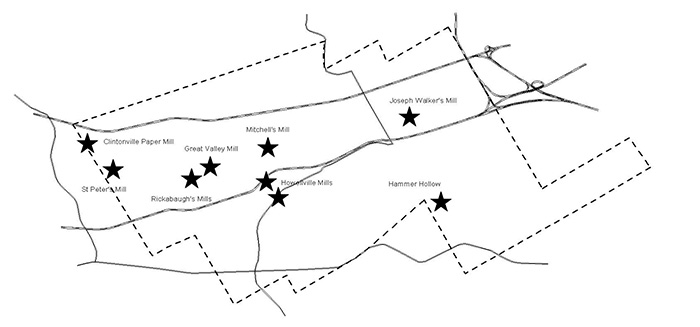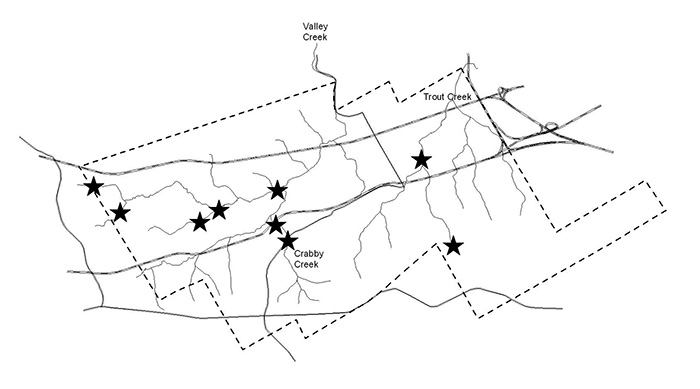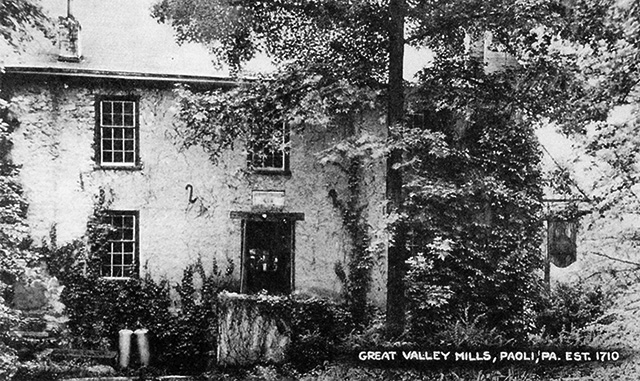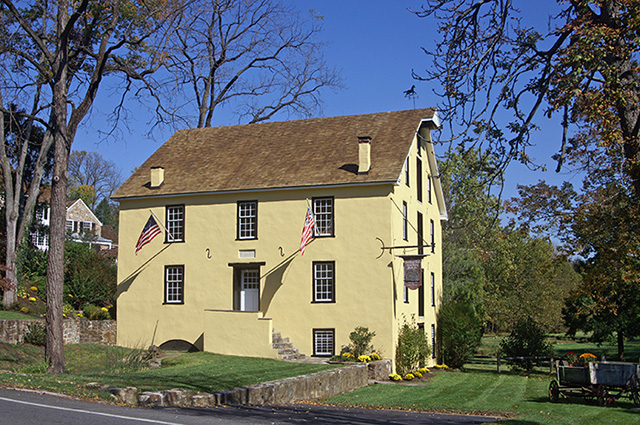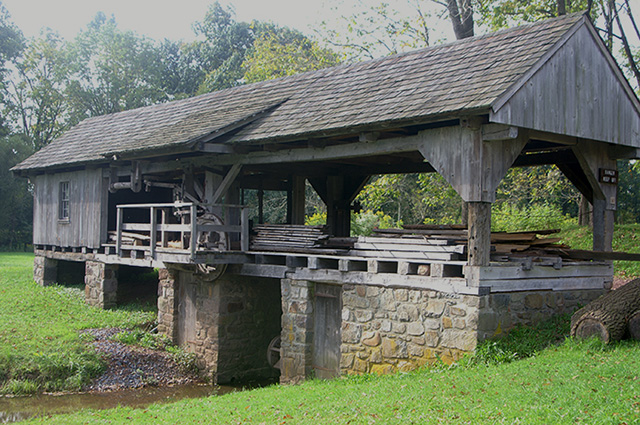|
Home : Quarterly Archives : Volume 44 |
Tredyffrin Easttown Historical Society |
|
Source: Winter/Spring 2007 Volume 44 Numbers 1&2, Pages 20–21 The Mills
It was vital for the early farmer to have a mill close at hand in order to grind his grain into flour. It is therefore not surprising that grist mills were established early in the township's history. Fuller's mills processing cloth and saw mills were also in operation in Colonial days. Milling was often a part-time occupation for a farmer as late as the 19th century. Transactions at the mill often did not involve cash. Instead the miller would take his toll, a certain amount of flour. Other goods were often available for sale at the mill. It acted as a store for the community until full time shops became established. Thomas Jerman built the first mill, the Great Valley Mill. It is located where Valley Creek crosses North Valley Road. The mill is mentioned in a court document concerning a road dated 1710. The original mill was a log structure, which was replaced by a larger stone mill around the time of the Revolution. Joseph Jeanes built the present mill in 1859. In the 1920s the mill specialized in whole grain health foods. The mill closed down in 1952. One of the last contracts it supplied was to Pepperidge Farms.
Mills and Creeks St. Peter's Mill, located where Church Road crosses Valley Creek, was the second mill to be built in the township. A fulling mill on the site is mentioned in a deed from 1739, but otherwise little is known of this mill. The most recent record of the mill comes from 1873 when it was operating as a grist and saw mill.
Great Valley Mills - Early 1900s
Great Valley Mills - Today The fuller's job was principally to complete the processing of cloth after it had been woven. The mill consisted of a number of water driven hammers that beat the cloth resulting in a more sturdy and water-resistant fabric. The fuller dyed the cloth, and raised and trimmed the nap. The fuller also refurbished worn clothing and blankets. The clothes were beaten in the mill together with “fuller's earth.” This special clay helped remove stains. The dyes used in the 18th century were not as long lasting as today. Colors would fade with time, and the fuller would re-dye the fabric. It is somewhat surprising that a fulling mill was established at such an early date. Only occasionally are weavers mentioned in the tax records. The greatest number noted was four in 1798. It is not clear how the fuller obtained sufficient business to make his investment in equipment worthwhile. The third mill to be established on Valley Creek was Mitchell's Mill. It is first mentioned in a document from 1775, when Joseph Mitchell was the miller. This mill was located on Mill Road and burnt down in 1920. Water-driven saw mills first appear in the record in the 1760s. One of the first was Joseph Walker's mill on Trout Creek. Over time the grist mills often had a saw mill associated with them, presumably using the same dam and mill race. Records of other mills also exist. Adam Rickabaugh, a Swiss emigrant, was one of the more entrepreneurial millers. In 1788 he had a hemp mill. These small mills broke up the stems of hemp in order to extract the fibers. Later Rickabaugh ran an oil mill. This was probably used to extract oil from flax and hemp seeds, or even from hickory nuts. In the 1780s Hammer Hollow started to be developed as a mill site. This ravine is at the upper reaches of Trout Creek on the side of the South Valley Hills. At various times there were saw, grist, and fulling mills on the site. In 1830 John Snyder was running a business making sickles on this site. Mills also existed in Howellville. A sawmill operated near the mouth of Crabby Creek from 1760 to nearly 1880. Further up the creek was a woolen mill that operated from 1842 until 1882. At Cedar Hollow there was a grist mill in 1825 which was then converted into a woolen mill and finally into a paper mill that lasted into the 1840s. The late 1800s saw the decline of the mills. The last mill to operate was the Great Valley Mill that continued grinding grain until 1952.
19th Century Chester County water-driven sawmill |
| Previous Article ⇐ ⇒ Next Article |
